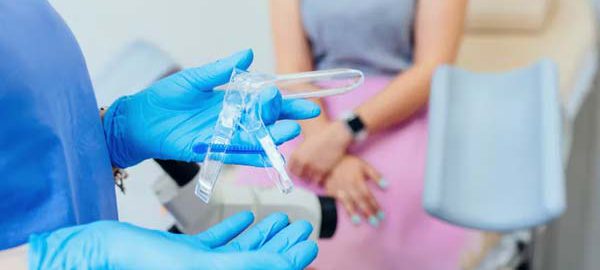Female Urinary Incontinence Treatment in Rohini, Delhi by Dr. Anil Agarwal, Urologist at Laser Stone Hospital
Introduction
Dealing with urinary incontinence can be incredibly challenging and often embarrassing for women. However, it’s a common issue, and you’re not alone. If you’re in Rohini, Delhi, you have access to top-notch care. Dr. Anil Agarwal, a renowned urologist at Laser Stone Hospital, specialized for female urinary incontinence treatment in Rohini, helping many women regain control over their lives.
Understanding Urinary Incontinence in Women
Definition and Symptoms
Urinary incontinence is the involuntary leakage of urine. It can vary in severity from occasional leaks when you cough or sneeze to having a sudden urge to urinate that’s so strong you can’t make it to the bathroom in time. Symptoms include:
- Leakage during physical activity or exertion
- Urge to urinate frequently
- Inability to hold urine
Common Causes
Several factors can contribute to urinary incontinence in women, including pregnancy, childbirth, menopause, and aging. Other causes might be related to medical conditions such as urinary tract infections, neurological disorders, or obesity.
Dr. Anil Agarwal: Expertise and Experience
Background and Credentials
Dr. Anil Agarwal is a highly experienced urologist in Rohini, known for his expertise in treating urinary incontinence. He has a stellar medical background with extensive training and numerous accolades for his contributions to urology.
Specialization in Urology
Dr. Agarwal specializes in female urology, focusing on urinary incontinence and related conditions. His dedication to women’s health and his compassionate approach make him a trusted choice for many patients.
Laser Stone Hospital: Leading Medical Facility in Rohini
Overview of the Hospital
Laser Stone Hospital, located in Rohini, is a leading healthcare facility offering a wide range of medical services. Known for its patient-centric approach, the hospital provides a comfortable and supportive environment for treatment.
Advanced Technology and Facilities
Equipped with the latest medical technology, Laser Stone Hospital ensures high-quality care. The hospital’s advanced diagnostic and treatment tools enable accurate assessments and effective urinary incontinence treatment in Rohini, Delhi.
Comprehensive Diagnosis of Urinary Incontinence
Initial Consultation Process
Your journey begins with a thorough consultation with Dr. Agarwal. He will take a detailed medical history, discuss your symptoms, and conduct a physical examination to understand your condition better.
Diagnostic Tests and Procedures
To diagnose urinary incontinence accurately, Dr. Agarwal may recommend several tests, including urinalysis, bladder diary, post-void residual measurement, and urodynamic testing. These tests help in identifying the type and severity of incontinence.
Treatment Options Available
Lifestyle Changes and Pelvic Floor Exercises
Simple lifestyle changes can significantly improve symptoms. Dr. Agarwal may recommend pelvic floor exercises (Kegels) to strengthen the muscles that control urination. These exercises are often very effective for stress incontinence.
Medications and Prescriptions
Various medications can help manage urinary incontinence. Depending on your specific condition, Dr. Agarwal might prescribe medications to control bladder spasms, reduce leakage, or treat underlying conditions.
Advanced Treatments: Botox Injections and Electrical Stimulation
For more persistent cases, advanced treatments like Botox injections into the bladder muscle can help reduce overactive bladder symptoms. Electrical stimulation therapy may also be used to strengthen pelvic floor muscles.
Surgical Options
When other treatments don’t provide relief, surgical options may be considered. Dr. Agarwal is skilled in several surgical procedures, including sling procedures that provide support to the urethra and bladder neck.
Innovative Treatments at Laser Stone Hospital
Minimally Invasive Surgery
Laser Stone Hospital offers minimally invasive surgical options for urinary incontinence. These procedures involve smaller incisions, less pain, and quicker recovery times compared to traditional surgeries.
Sling Procedures
A common and effective surgical urinary incontinence treatment in Rohini is the sling procedure. It involves placing a mesh tape under the urethra to provide support and prevent leakage. This procedure has a high success rate and can significantly improve quality of life.
Why Choose Dr. Anil Agarwal and Laser Stone Hospital
Personalized Treatment Plans
Dr. Agarwal understands that every patient is unique. He creates personalized treatment plans tailored to your specific needs, ensuring the best possible outcomes.
Comprehensive Care
From the initial diagnosis to treatment and follow-up, Dr. Agarwal and his team provide comprehensive care. They are dedicated to supporting you throughout your treatment journey, ensuring you feel comfortable and informed every step of the way.
Conclusion
Urinary incontinence doesn’t have to dictate your life. With Dr. Anil Agarwal’s expertise and the advanced facilities at Laser Stone Hospital in Rohini, Delhi, effective treatment is within reach. Don’t hesitate to seek help and take the first step towards a better quality of life.
FAQs
1. What causes urinary incontinence in women?
Urinary incontinence can be caused by various factors including pregnancy, childbirth, menopause, aging, urinary tract infections, and neurological disorders. Lifestyle factors such as obesity and smoking can also contribute.
2. How is urinary incontinence diagnosed?
Diagnosis involves a detailed consultation, medical history review, physical examination, and specific diagnostic tests such as urinalysis, bladder diary, post-void residual measurement, and urodynamic testing.
3. What treatment options are available for urinary incontinence?
Options for female urinary incontinence treatment in Rohini include lifestyle changes, pelvic floor exercises, medications, advanced treatments like Botox injections and electrical stimulation, and surgical options such as sling procedures.
4. How effective are pelvic floor exercises for urinary incontinence?
Pelvic floor exercises, or Kegels, are often very effective for stress incontinence. They help strengthen the muscles that control urination, reducing leakage and improving bladder control.
5. Why should I choose Dr. Anil Agarwal for urinary incontinence treatment?
Dr. Anil Agarwal offers a personalized approach to treatment, leveraging his extensive experience and the advanced facilities at Laser Stone Hospital to provide comprehensive and effective care tailored to your needs.







